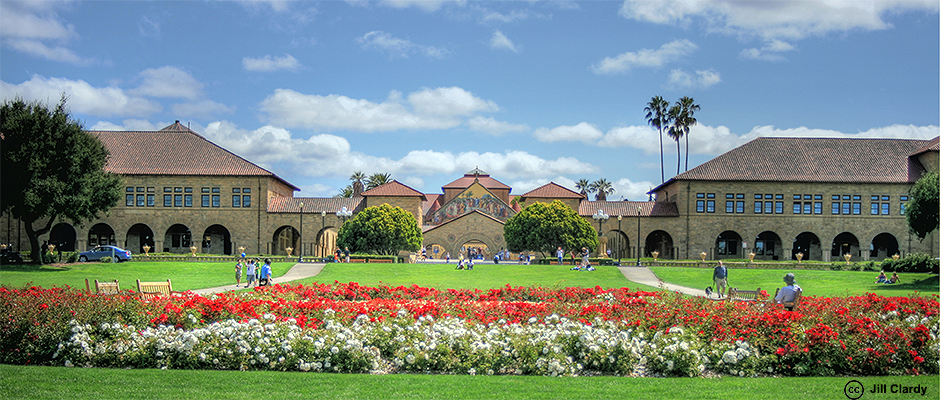Why Stanford Communication?
Stanford’s program in Communication was one of the pioneers of the field, formed by Chilton Bush and Wilbur Schramm in the 1950’s. Early on, the program distinguished itself by focusing on cutting edge ideas—research that was not only academically rigorous, but which also produced real world change in institutions such as government, media, and industry.
This consistent pattern of excellence was recognized by the National Research Council, whose 2010 report used multiple ranking methods that often placed Stanford’s Department of Communication as number one overall in a field of 83 doctoral programs. Data from the NRC showed that Stanford ranked especially high in terms of its publications per faculty member and citations, percentage of researchers with grants, financial support for new students, and graduate student completion rate.
Most of our doctoral graduates enter academic teaching and research careers, or communication-related professions that require research skills. After a core curriculum of courses in both quantitative and qualitative methods, statistics, and mass communication theory, each student builds a research specialization through advanced courses and seminars in Communication and related departments, research projects, teaching, and an examination in the area of concentration. These requirements are normally completed in four years, and the dissertation in the fifth year.
Faculty involve their doctoral students in a wide variety of research projects. The program is largely an apprenticeship, so it is important for each student to join a project and to work closely with an advisor by the second year. Each Ph.D. student also teaches at least two courses.
Because of this curriculum, the department continues to be a major source of professors of communication nationally and internationally. For example, over the past five years our students have received tenure track positions at New York University, the University of Michigan, the USC Annenberg School of Communication, the Ohio State University, the University of Amsterdam, University of North Carolina Chapel Hill, Washington State University, Boston University, and the University of Georgia, to name a few.

